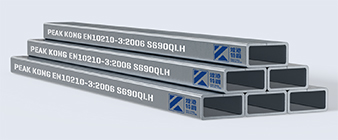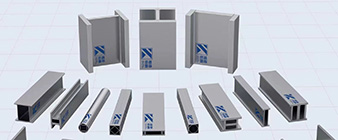Titanium Grade 2 (Ti Gr 2 / 3.7035) is increasingly used in offshore energy applications due to its good properties. The following is an overview of its applications in this field:
Offshore wind turbines
– Support structures: used in the construction of towers and foundations due to their high strength-to-weight ratio, helping to reduce overall weight and increase stability.
– Subsea parts: used for parts that need to be resistant to seawater corrosion, such as mooring systems and anchor chains.
Oil and gas platform
– Structural beams and columns: used as frames for offshore platforms to provide strength and durability in harsh marine environments.
– Pipe systems: Pipes commonly used to transport oil, gas and water, where corrosion resistance is critical.
Submarine equipment
– Riser and flowline: Used in subsea risers and flowlines to transport hydrocarbons from the seafloor to the surface, benefit from the corrosion resistance and strength of titanium.
– Subsea manifold: Structural section of a manifold used to manage the flow of oil and gas from multiple wells.
Ocean Renewable Energy Device
– Wave energy converters: Structural components of equipment used to harness the energy of ocean waves, where durability and resistance to ocean conditions are crucial.
– Tidal energy systems: Benefit from titanium’s lightweight and corrosion-resistant properties for the construction of tidal turbines and related infrastructure.
1. Corrosion resistance: Excellent resistance to seawater and other corrosive environments, ensuring the longevity and reliability of the structure.
2. High strength-to-weight ratio: Reduces the overall weight of the structure and improves stability and performance in challenging offshore conditions.
3. Ductility: Good ductility allows flexible design and manufacturing, and adaptability to various structural requirements.
4. Low maintenance costs: The durability of titanium reduces the need for frequent maintenance, thereby lowering operating costs over time.
5. Temperature resistance: Maintains mechanical properties under different temperature conditions, suitable for dynamic offshore environments.
– Cost: The higher cost of titanium compared to traditional materials such as steel can be a limiting factor in some applications.
– Manufacturing technology: Requires specialized manufacturing processes, which may increase lead times and costs.
Titanium Grade 2 structural profiles are becoming increasingly important in offshore energy applications, combining strength, durability and corrosion resistance. As the offshore energy industry continues to grow, demand for advanced materials like Titanium Grade 2 is likely to increase.
If you need more specific information or more details, please feel free to ask Peak Kong Special Steel!
-
 2024-4-03 High strength steel introduction and solutions
2024-4-03 High strength steel introduction and solutions -
 2024-9-19 1.4462 stainless steel performance introduction
2024-9-19 1.4462 stainless steel performance introduction -
2024-1-10 Stainless Steel – Austenitic – 1.4404 (316L) Bar and structural Section
-
 2024-9-27 926 / 1.4529 stainless steel beams and columns
2024-9-27 926 / 1.4529 stainless steel beams and columns -
 2024-9-27 400 / 2.4360 Stainless Steel Hollow Structural Profiles
2024-9-27 400 / 2.4360 Stainless Steel Hollow Structural Profiles -
 2024-9-20 2507 super duplex stainless steel in nuclear power of innovative applications
2024-9-20 2507 super duplex stainless steel in nuclear power of innovative applications -
 2024-9-24 310S stainless steel structural Beams and columns
2024-9-24 310S stainless steel structural Beams and columns



